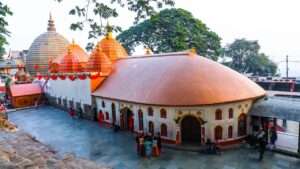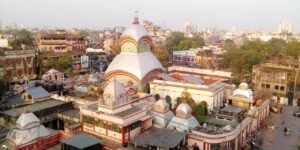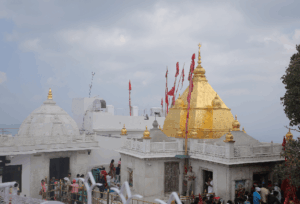Guhyeshwari Temple, located in the sacred city of Kathmandu, Nepal, is one of the 51 revered Shakti Peethas across the Indian subcontinent. The name “Guhyeshwari” is derived from the Sanskrit word guhya, meaning “secret” or “hidden”, and Ishwari, meaning “Goddess”. This temple holds immense religious importance for Hindus and Tantric practitioners, as it is believed to be the spot where the hips of Goddess Sati fell after her self-immolation.
Mythological Significance
The temple’s roots are deeply tied to the ancient legend of Sati and Shiva. According to Hindu mythology, when Goddess Sati sacrificed herself at the Daksha Yagna, Lord Shiva carried her body in sorrow, performing the cosmic dance of destruction, Tandava. To pacify Shiva and restore balance, Lord Vishnu used his Sudarshan Chakra to dismember Sati’s body, and the pieces fell at various locations, forming the Shakti Peethas. Guhyeshwari marks the place where her hips are said to have fallen, and hence it is considered highly sacred.
Spiritual and Tantric Importance
Guhyeshwari Temple is especially revered among Tantric practitioners, who consider it a key center for spiritual awakening and Shakti worship. It is associated with the goddess Guhyakali, a fierce form of Kali who represents the hidden, secretive power of the divine feminine. Many Tantrik sadhaks and yogis travel here for spiritual rituals and meditation.
It is also believed that the temple is spiritually aligned with the nearby Pashupatinath Temple, one of the most significant shrines of Lord Shiva in Nepal. The divine energy of Shiva and Shakti is believed to be present together in this region, making it a spiritually charged area.
Architecture and Setting
The Guhyeshwari Temple, built in the 17th century during the reign of King Pratap Malla, features a pagoda-style structure typical of Nepalese temple architecture. The sanctum houses a flat, uncarved stone, symbolizing the goddess. Devotees offer flowers, red powder (sindoor), and other traditional offerings, particularly during the Navratri and Dashain festivals.
Surrounded by nature and situated on the banks of the Bagmati River, the temple offers a tranquil environment for prayer and reflection. It’s a peaceful retreat for pilgrims and spiritual seekers alike.
Festivals and Pilgrimage
The temple becomes especially vibrant during the Navratri festival when devotees from across Nepal and India gather to offer prayers and participate in rituals. Dashain, the biggest Hindu festival in Nepal, also brings thousands of devotees to the temple.
Guhyeshwari is considered an essential stop for those undertaking the pilgrimage of the Shakti Peethas. Visitors often pair their visit with the Pashupatinath Temple for a complete spiritual experience.
Conclusion
Guhyeshwari Shakti Peeth stands as a powerful symbol of divine feminine energy and spiritual transformation. With its strong Tantric roots, mythological depth, and serene atmosphere, the temple continues to be a guiding light for devotees seeking inner strength, healing, and liberation. For spiritual travelers, it is not just a place of worship but a portal to the mystical union of Shiva and Shakti.


















